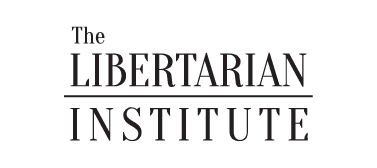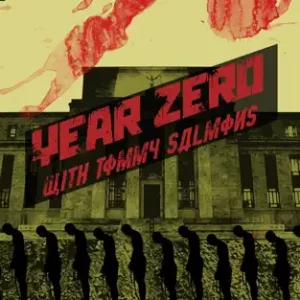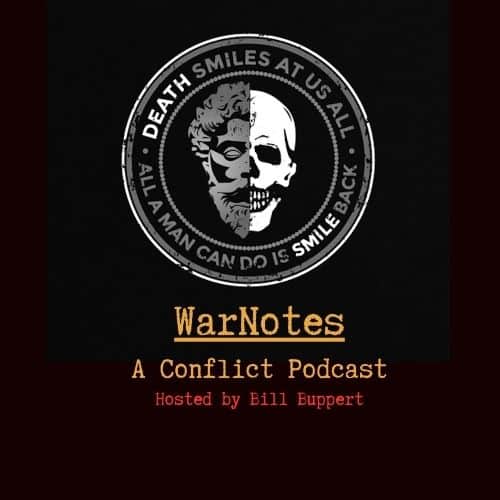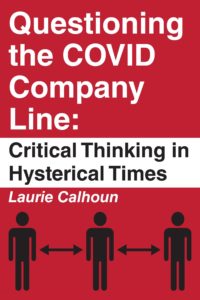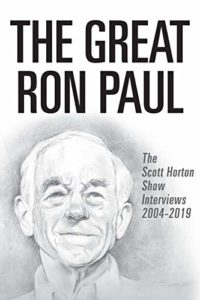President Donald Trump’s plan for Gaza, relocating Palestinians and building the Riviera of the Middle East on the land where they lived, managed the rare trick of offending almost everyone. Objections fell along tracks worn into trenches by long warfare. Leftists called it a violation of international law and an insult to Palestinians who define their struggle as one of national self-determination. Conservatives asked for aid for East Palestine, Ohio before Palestine and warned President Trump about embracing neoconservative nation-building. Neoconservative sympathizers like Lindsay Graham, believers in the “civilizing” power of American might but not in freelance real estate, criticized the project’s feasibility. Liberals called it, hypocritically, a recipe for “endless wars” and pined for Kamala Harris.
The problem with the plan when it comes to Americans, though, is something else. Namely, it’s counterproductive to President Trump’s primary goal of his second term because it will empower those Washington operators he is even now beating back. In broad strokes, these operators are the same ones I reported on for the Libertarian Institute about the Ukrainian NGO boondoggle and its links to players pushing a new Global War on Terror. They are part of the contracting and consulting wings of the American Deep State: the military-industrial complex and scientific technological elite Dwight Eisenhower warned about sixty-four years ago this past January. But the “Gaza as Riviera” plan also draws heavily on foreign operators: Israel and the Gulf states which America partnered heavily with in the lead-up to 9/11—a catastrophe that’s directly traceable to that partnership, and that could happen again today.
Troublingly, digging into the plan’s inception suggests that, far from being a sudden brainchild of the president’s or even a negotiating gambit, it was pushed inside the Trump campaign and the White House for many months. Though it likely appealed to President Trump because of his successful background in real estate, this plan is miles away from a real estate play, though it was marketed as such. Instead it’s a political move made by domestic and foreign operators deeply embedded in the Washington institutions promoting permanent war—and delivering war’s consequences on Americans.
The first reference to the plan Trump laid out for Gaza came in early 2024, from an instructive source. This was Jared Kushner, the president’s son-in-law who was influential in his first term, especially when it came to negotiating closer ties between the Gulf States (Saudi Arabia, Qatar, the United Arab Emirates) and Israel. In 2020, Kushner, who is Jewish and a Zionist, proposed “Israel to annex 30 percent of the West Bank and a Palestinian pseudo-state to be created with no military,” and he “tried to entice the Palestinian Authority” to accept the plan “by offering $50bn in economic aid” which “was rejected.”
Kushner has been politically peripheral since 2021. He was known to be scouting for partners in the Gulf states to sponsor his development projects. The upshot of this scouting was Kushner’s new firm Affinity Partners, which is backed by Saudi Arabia’s sovereign wealth to the tune of $2 billion, along with $1.5 billion cumulatively from the United Arab Emirates and Qatar. According to the website Middle East Eye, Kushner’s firm Affinity Partners has invested in two Israeli companies:
“Phoenix Holdings, an insurance company, and the car leasing division of Shlomo Holdings, whose parent company, Shmeltzer Holdings, is part owner of Israel Shipyards, the only domestic shipbuilder for the Israeli navy.”
This is the context in which Kushner, speaking to an audience in February 2024 at Harvard’s Belfer Center, said the following:
“Gaza’s waterfront property, it could be very valuable. It’s a little bit of an unfortunate situation there, but I think from Israel’s perspective, I would do my best to move the people out and then clean it up.”
Fast forward to August 2024, and the idea came up again, from another instructive source. This was Joseph Pelzman, a George Washington University professor who doubles as an international consultant. Speaking on a podcast hosted by the former Israel Ministry of Tourism official Kobby Barda, Pelzman said that Kushner “wants to put money in” and his investors are “salivating” to get into Gaza. He told the podcast host that he had written a scholarly article proposing Gaza redevelopment and “went to the Trump people [with it] because they were the ones who initially had an interest in it.” According to Pelzman:
“The place to start is to dig up the entire place. Then you have to figure out what to do with the local population, you gotta move them around. Everything’s gotta go…nothing vertical stands…The United States can lean on Egypt. Egypt is a bankrupt state. We know that they are broke, really broke.”
Then, in October, Pelzman publicly released this scholarly article: “An Economic Plan for Rebuilding Gaza: A BOT [Build, Operate, Transfer] Approach.” In it, he argued that “the reconstruction of Gaza after the latest war between Israel and Hamas creates an opportunity to approach the problem from a purely economic viewpoint” and that “the solution to the Gaza problem can be found by focusing narrowly on [an] investment solution.” He argued for the BOT (Build, Operate, Transfer) model: Israel and America should contract with private companies to rebuild the area, and then transfer it to Israeli control. Four months later, President Trump announced a version of Pelzman’s idea from the White House.
What makes this play not only underhanded but particularly objectionable are the connections at play. These connections prove that, far from being “purely economic,” the plan favored by Pelzman and others is dependent on government-backed operators who have commandeered American foreign policy for profit and power for decades.
The Washington side of this equation begins but doesn’t end with Pelzman’s consulting firm, “the Center of Excellence for the Study of the Middle East and North Africa (CEESMENA).” CEESMENA’s website is where a copy of Pelzman’s article on rebuilding Gaza can be found, and he links this article explicitly with CEESMENA’s mission. “The vision of CEESMENA,” he writes, is “to treat internal [Middle East and North Africa] problems from a purely economic perspective.”
This “economics only” approach is a complete misrepresentation of what’s allowed CEESMENA to exist. Not only is Pelzman’s career based on government funding, but so is the career of CEESMENA’s co-founder Don Hepburn. Hepburn describes himself on his CEESMENA biography as having spent “nearly 30 years in the US government working as a diplomat in the Middle East, Europe and Asia.” On the intelligence website The Cipher Brief, Hepburn calls himself a “former Senior CIA and FBI official,” and on his LinkedIn he calls himself a former “senior National Security Executive.” This is also how he described himself when he put his name to the now-famous October 19, 2020 letter alleging that the contents of Hunter Biden’s laptop were or might be Russian disinformation.
The Belfer Center, where Kushner used his February 2024 speech to first dangle the Middle East idea Pelzman ran with, is another clearinghouse of government-backed operators Donald Trump is targeting elsewhere. From 2017 to 2021, it provided the nurturing framework for Biden USAID Director Samantha Power to launch a new initiative, the International Peace and Security Project, in between her stints in Barack Obama’s White House while securing an intervention in Libya and in Joe Biden’s White House funding the “humanitarian” angles of proxy wars in Ukraine and Gaza.
Belfer’s former director, former Secretary of Defense Ashton Carter, was tied into Washington technology contractors. Its current director, Meghan O’Sullivan, was the Deputy National Security Adviser for Iraq and Afghanistan from 2004 to 2007, and likely a prime source for Washington insider Bob Woodward’s books about the invasions and their aftermath. Recently she was a member of U.S. Secretary of State Antony Blinken’s Foreign Affairs Policy Board. Until 2023 she sat on the board of Raytheon, one of Washington’s “big five” defense contractors.
Pelzman’s and Kushner’s other commitments also suggest priorities that echo the Belfer Center’s, not America’s.
Pelzman’s consultant listings beginning in 1999 show nine separate stints contracting with the U.S. Agency for International Development (USAID), the foreign development agency President Trump is shutting down: in Sub-Saharan Africa, Africa, Egypt (twice), and Vietnam. But Pelzman is also tied to an area even more directly implicated in the confluence of weapons build-ups, interventions, and economics: Eastern Europe. Beginning in the early 1990s, when America’s defense spending boom helped pressure the Soviet Union into disintegrating, Pelzman worked the region as it transitioned to a “free trade” model, including with the World Bank in Poland; he also worked in Bulgaria and, in the 2000s, in Georgia and Ukraine. This “free trade” model, we now know, was more crony capitalist than free market and dependent on Washington-backed investments, many of which found their way into the hands of Eastern European oligarchs.
The same applies to Kushner. According to Middle East Eye, Kushner’s Gulf state-backed investment fund, Affinity Partners, “has already broken ground on converting the old Yugoslav Ministry of Defense building in Belgrade, Serbia, into a posh hotel and luxury complex.” He also “plans to build a $1.4bn luxury resort on Sazan, Albania’s only island in the Mediterranean and a former military base.” This is Kushner benefiting directly from America’s intervention in the wars in the former Yugoslavia thirty years ago, which, as I’ve pointed out previously at the Libertarian Institute, was the inception of the humanitarian-military boondoggle we’ve endured for every year since. “The first person to greet our soldiers as they arrive in the Balkans and the last one to wave goodbye is one of our employees,” Dick Cheney, the CEO of Halliburton, said at the time. The security provided by firms like Cheney’s is what allowed “humanitarian” non-profits like George Soros’s and, later, developers like Kushner to “globalize” the countries of the former Yugoslavia.
But Pelzman has ventured even further in the name of promoting global markets backed by Washington institutions. In the mid-2000s, he worked for USAID on a project called “trade liberalization” around the time Washington seriously expanded its imports from China. From 2012 to 2013 he was Fulbright Senior Scholar and Visiting Professor at Renmin University, Beijing and was “nominated by Renmin University to the 1000 Scholars Program in the People’s Republic of China.” Finally, from 2019 to 2020, Pelzman was subsidized by a grant from the PRC Confucius Institute to George Washington University.
This last connection is worth rewinding. The PRC Confucius Institute at George Washington University is one of the branches of the Chinese Communist Party’s (CCP) Confucius Institutes, which in the 2010s spread so that they ranged from GW to the University of Illinois to “elite” secondary schools across the country. They are seen by many as parts of the Chinese Communist Party’s infiltration of the United States, and they provoked sufficient backlash that GW’s was shuttered in 2021.
Eventually these connections move back to Israel. Pelzman’s grant from the Confucius Institute was “to study [People’s Republic of China’s] Outward Investment in Israel: A Model of R&D Acquisition.” The article he developed from this research, still under review and not yet published, is titled ““An Economic Model of Build, Operate and Transfer (BOT) of PRC Belt and Road Investments in Israel.” The “Belt and Road” Initiative is, famously, the CCP’s investment project to solidify its interest in countries ranging from Iran to Panama. In context, Pelzman’s focus on it is not surprising. In 2017, Israeli Prime Minister Netanyahu described Israel’s relationship with China as “a marriage made in heaven,” remarking that “I think that there is an extraordinary capacity for China to assume its rightful place, as it’s doing, on the world stage” and that “we are your perfect junior partner for that effort.” And, if Pelzman’s globalist career tracks a single nation’s, it’s Israel.
The 1980s was the start of Pelzman’s career proper after he received a PhD from Boston College, and references to Israel in his CV are particularly concentrated during that period. This was the decade during which ties between America, Israel and Saudi Arabia were growing because of President Ronald Reagan’s efforts to combat Soviet influence in the Mideast. This meant joint military exercises, increased military aid, and duty-free and tax-free imports and exports with Israel, as well as increasing arms sales to Saudi Arabia. During this period until the late 1990s, Pelzman held posts at the Hebrew University of Jerusalem (1984-1991) and the Maurice Falk Institute for Economic Research (1988-1997.) He advised the IRS on investment tax credits with regard to Israel and authored a “country study” of Israel for the U.S. government. And he studied the effects of America’s and Israel’s new free trade agreements.
Read one way, then, Pelzman made his career by jumping on America’s embrace of Israel to win the Cold War. Then he used that CV to profit off the Washington-backed “free trade explosion” in Eastern Europe, Africa, and Asia after America’s Cold War victory. Now, in an era of anti-globalist backlash, he is returning to where his career started—strengthening the relationship between America and Israel, where he has held a post at Ben Gurion University since 2006.
Pelzman’s connections with regard to his Gaza plan have similar affinities. Pelzman’s interlocutor on the podcast where he announced his plan in August, Kobby Barda, made his career promoting Israel’s soccer league and worked as the deputy director for the Israel Tourism Ministry from 2021 to 2023. During that time, the Tourism Ministry’s director was Yoel Razvozov, who collaborated with Jared Kushner on Israel’s airline El Al’s inaugural flight to Morocco—a result of Kushner’s peacemaking overtures to the Gulf States, Egypt, and Morocco.
Kushner himself along with his family has longstanding links to Israel. The Israeli press has famously reported that his ties to Israel’s current prime minister, Benjamin Netanyahu, are so close that Kushner once gave up his bed as a child for Netanyahu when he visited Kushner’s family in America. Tellingly, when it comes to Israel, Kushner has shown himself willing to format America’s foreign policy along the interventionist lines his father-in-law opposes. In 2020, when floating his deal to make a Palestinian pseudo-state, he compared the proposed U.S.-backed rebuilding of this pseudo-state to the Marshall Plan: the start of America’s nearly eighty-year involvements abroad which empowered the Washington institutions President Trump calls “the deep state.”
The Bigger Play at Hand—and its Consequences
The logical aim of these players is to reconstruct America’s 1980s Cold War alliance with Saudi Arabia and Israel. This was a boondoggle that extended well past its sell-by date, the end of the Cold War, thanks to the profits involved, as Washington-backed corporations bought Saudi oil and Washington-backed contractors sold Israel weapons. The boondoggle got pushed into high gear after September 11, 2001, when the Saudi royals’ play of taking Americans’ money while propitiating their devout Islamist population by tolerating groups like Al Qaeda exploded, creating wars in Afghanistan and Iraq and a bonanza for U.S. weapons contractors. The resulting backlash to this bonanza from devout Muslims, led by Iran, strengthened Israel’s weapons demands and gilded Washington contractors’ profits further.
Now, as President Trump leads an administration widely seen as focusing on reducing our footprint in the Middle East and securing a peace deal with Iran, the same players who benefited from America’s involvement in the region are asking for a rewrite. But what does it take to manage the rewrite they want; to build a luxury strip in a high-risk security zone? In a Truth Social post on February 6, President Trump elaborated:
“The U.S., working with great development teams from all over the World, would slowly and carefully begin the construction of what would become one of the greatest and most spectacular developments of its kind on Earth.”
The key reference here is to “development teams,” because it hearkens back to the Washington order President Trump is trying to put in the past. “Development teams” are the province of the Belfer Center and Pelzman’s consultancy CEESMENA; of USAID and the Department of State. They demand advisers and accredited experts, as well as consultants like Joseph Pelzman and Don Hepburn. They suggest the need for white papers and consultations with Washington think tanks, disproportionally funded by Pentagon bureaucrats as well as too-big-to-fail weapons contractors. Indeed, as I report in an upcoming piece, think tanks like RAND, the Atlantic Council, and the Center for Strategic and International Studies at Georgetown not only will benefit from a Mideast focus but desire it—because it avoids the strategic shift to Latin America and China aimed at by Trump which will prove costly to their funders, which support continuing the post-1945 focus on Europe, Africa, and the Middle East.
And there will be the need for security contractors like Halliburton, since one likely consequence of rebuilding Gaza is the alienation of a good portion of the Muslim world—not because America is defending its own interests, but because America is perceived as erasing the possibility of self-determination for the Palestinian people. The security boondoggle in 2000s and 2010s Afghanistan and Iraq has become legend. The involvement in Gaza, gilded with the language of “economics” over politics and “private investment” over government involvement, will be an equal bonanza. It will likely be played by the Saudi Royal Family in the same way it played American involvement in the region in the late 1990s and early 2000s—opposing it publicly to try to appease its population and profiting from it in private. And it may very well lead to the kind of regional pushback that will create a new Global War on Terror being pushed by operators (Bari Weiss, Aayan Hirsi Ali, Niall Ferguson, Sarah Adams) I’ve reported on in the past.
What was missing during the Middle Eastern boondoggles of the early 2000s was what’s available in 2025: a populist constitutionalist conservative party with a clear metric to use to measure American Middle East policy. Namely, apart from honestly differing opinions about the validity of different national claims in the region, does our government consistently engage in the region help Americans?
This was the question asked and answered by Ronald Reagan, who started America’s engagement with Israel and Saudi Arabia, and who was crystal clear as early as 1979 about his reasons: “[T]he fall of Iran has increased Israel’s value as perhaps the only remaining strategic asset in the region…for thwarting Moscow’s designs,” and the United States could not let Saudi Arabia “be an Iran” which “would shut off” oil supplies to America. It was only when Reagan’s strategic pivot became a permanent boondoggle at the hands of contractors, operators, and interventionists in the 1990s that talk of moralism replaced talk of strategy.
But supporters of Israel remain quietly strategic when it comes to that country’s long-term interests. Several years ago, I was blind CC’d on an email to one prominent American Zionist from another prominent American Zionist now aligned with President Trump’s movement. I kept it because its contents, at the time, surprised me:
“A century ago…Zionism was a…political impulse among a bunch of eastern Europeans and…Christian men of the British Empire…Now, Israel has 150 nuclear bombs and the most tech patents in the world after Silicon Valley. 50 years from now, Israelis will all speak Hebrew, Arabic, Chinese, Hindi…”
This is not the language of someone who thinks, as many Americans do, as I thought at the time, that Israel’s and America’s interest are forever entwined. It’s the language of someone who thinks, sensibly, that Israel is a state with its own interests and operators who will act on those interests, whether they lead Israel to America, or to China and to India. We should see Israel the same way, and we should judge the developing relationship as we do our relationship with all other nations: what puts America first?
